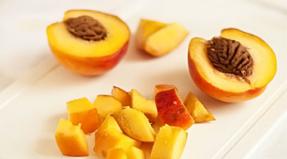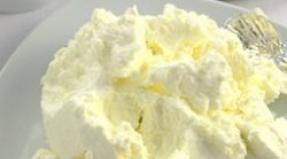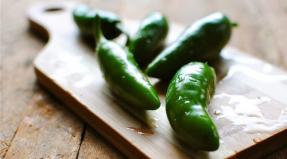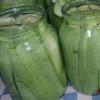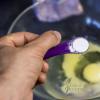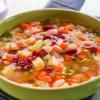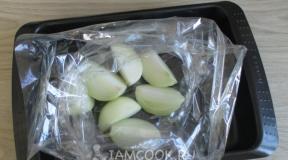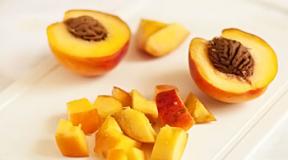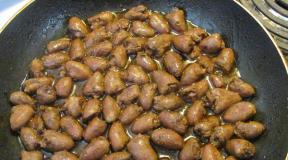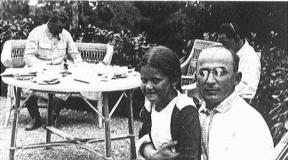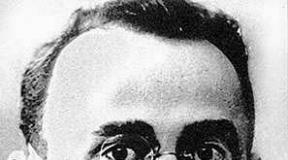Analysis of motor activity in the second younger group. Motor activity with elements of logorhythmics in the second junior group “Winter's Tale” in the process of organizing routine moments. Use of health-saving technologies
Target:
developing children's interest and value attitude towards physical education classes
Tasks:
Development of physical qualities (speed, strength, flexibility, endurance and coordination);
Accumulation and enrichment of children’s motor experience (mastery of basic movements);
Formation in pupils of the need for physical activity and physical improvement.
Formation of initial ideas about a healthy lifestyle.
Program content
Encourage children to complete tasks correctly,
Strengthen the ability to walk and run in a team one at a time, speed up and slow down, breathe correctly, stop when given a signal,
Develop balance, the ability to throw the ball in the indicated way (right or left hand),
Teach children to find their place in the column, not to push each other, and to be attentive.
Equipment
Small balls (4 pcs.), hoops, “Traffic Light” model.
Progress
The teacher invites the children to go on a trip on the “Locomotive - Health”. (Children line up in a column one at a time, walking imitating the movement of a train.)
Educator
- “Chug - chug - I puff, chug - chug - I drive,
I don’t want to stand still!”
Moving in a circle one after another.
The song "Locomotive" is performed.
The locomotive is moving, moving,
Two pipes and a hundred wheels (2 times)
The driver is a red dog……..
We drove, we drove……..stop, stop!
1. Stop “Warm-up”
Walking with long strides - “Giants”.
Walking with small steps “Dwarfs”.
Snake walking.
Walking with high knees.
Running in a circle game "Carousel".
Running and stopping game "Stop"
Educator
I'm knocking my wheels, I'm knocking
Sit down quickly, I'll give you a ride!
Chug-chug! The locomotive puffs.
He took the boys far.
(Children line up one after another and move in a circle, imitating the movement of a steam locomotive.)
A song is being performed.
Everyone works deftly with their feet,
We drove, we drove…. Stop - stop!
2. Stop “Poprygunchik”
Game "Jump - Clap".
Rules of the game:
Jump rhythmically to the clapping in the indicated way (feet together or legs apart - together)
I'm knocking my wheels, I'm knocking,
Sit down quickly, I'll give you a ride!
Chug - chug the locomotive puffs
I took the guys far!
Children imitate the movement of a train.
We're going, we're going, we're going for a long time,
This path is very long.
There will be a stop soon
There we can rest.
3. Stop "Ball"
Game "Get in the circle."
Rules of the game:
Throw and pick up the ball only at a signal, try to hit the hoop; throw with one hand, repeating with the other hand.
Children ride in a circle and sing a song.
4. Stop “Don’t fall!” (equilibrium)
Game “Spin around - don’t fall!”
Rules of the game:
Briefly - temporary slow circling in place.
Movement in a circle or snake while singing a song.
5. Stop "Kindergarten"
Game - fun "Traffic Light".
Rules of the game:
Children go to green. On yellow - they walk. On red - they stand.
The teacher thanks you for a good trip.
International pedagogical media 16+
MENU
Methods and techniques for enhancing the physical activity of children during a walk in the second junior group (speech at the pedagogical council)
completed:
teacher
MADO kindergarten No. 69 “Ladushki”
Stary Oskol urban district
Dergun Tatyana Viktorovna
Methods and techniques for activating children’s motor activity while walking
in the second junior group
(speech at the pedagogical council)
Children of primary preschool age are characterized by intensive growth and development of the body. This is one of the periods of the so-called crisis in the morphofunctional development of a child, the most favorable for a qualitative leap in motor development. At this age, children are able to identify individual elements of movements, which contributes to their more detailed awareness. Children become interested in the results of movements, the correctness of their execution, naturalness, lightness, and rhythm appear. Children's need for movement is realized in outdoor games, independent physical activity, and specially organized classes.
The child’s assimilation of motor experience and its development are facilitated by such methods learning how information-receptive, reproductive, problem-based learning, as well as methods for developing creativity.
The information-receptive method is expressed in the relationship, interdependence of the joint activities of the teacher and the child. Full assimilation of motor actions is ensured by the method of organizing the reproduction of methods of activity, or the reproductive method. When implementing it, the teacher thinks through a system of physical exercises aimed at reproducing the actions known to the child, which were formed as a result of the use of the information-receptive method. The reproductive method increases the assimilation of knowledge and skills, allows them to be used according to a model and varied in a variety of situations.
Methods of problem-based learning are considered as elements that are components of an integral learning system: if it does not contain problem-based learning as an integral part, it cannot be considered complete. Only the child’s assimilation of ready-made knowledge cannot teach him to think or develop the ability for creative activity to the required level.
The regulation method is aimed at providing optimal conditions for the development of motor skills and abilities, the development of psychophysical qualities.
The method of circular training is that the child moves in a given circle, performing certain exercises or tasks that allow a diversified effect on various muscles, organs and systems of the body. The goal of the method is to achieve a healing effect from exercise and to increase the body's performance. Exercises are performed one after another, rest is provided at the end of the entire circle.
Visual methods form ideas about movement, sensory perceptions and motor sensations, develop sensory abilities; verbal (verbal) methods activate the child’s consciousness, contribute to a deeper understanding of the tasks assigned to him, conscious performance of physical exercises, understanding of their content, structure, independent and creative use of them in various situations; practical methods ensure verification of the child’s motor actions, the correctness of their perception, and motor sensations. Practical methods are strictly regulated.
The game method makes it possible to improve motor skills, independent actions, and creativity. The competitive method is used in all age groups. The kids are given a task like “Who will bring the flag the fastest”, “Who will throw the ball further”. When teaching movements, all methods are interconnected.
Each of them includes a system of techniques that are combined to solve learning problems.
A technique is an integral part that complements and specifies the method in detail. A variety of techniques are used when teaching children. They are aimed at optimizing the assimilation of movements, awareness of the motor task, and the individual development of each child.
Techniques must correspond to the program content of motor material, age and typological characteristics, the degree of proficiency in movements, and the general development of the child. An appropriate selection of techniques allows you to influence all analytical systems, activate consciousness, independence and creativity when performing motor tasks.
The methodology of physical education uses general didactic techniques.
The visual method techniques are varied. Visual techniques include correct, clear display of a movement pattern or its individual elements; imitation of patterns of surrounding life; the use of visual landmarks to form orientation in space; use of films and videos, photographs, graphs, drawings, television programs, etc.
Tactile-muscular visualization is based on the direct assistance of the teacher, who, by touching the child, clarifies and directs the position of individual parts of his body. For example, the teacher runs his hand along the child’s back so that he stops slouching and takes a physiological body position, or helps the child lean lower if he finds it difficult to bend forward.
Subject visualization includes the use of objects and aids to form ideas about movement, promotes control and correction of body position when performing exercises.
Visual-auditory techniques carry out sound regulation of movements that are performed to music, songs, the rhythm of a tambourine, drum, jokes, poems. The use of auditory visualization not only improves the quality of movements, regulates tempo and rhythm, but also causes an emotional uplift in the child and stimulates the desire to perform movements.
Techniques of the verbal (verbal) method play an important role in teaching a child to move. Techniques of brief simultaneous description and explanation of physical exercises are used. They are based on the child’s motor and life experience, his ideas. These are explanations accompanying a specific display of movement or its individual elements; instructions for performing the movement; conversation preceding the introduction of new physical exercises and outdoor games; clarifying the plot of an outdoor game or the sequence of motor actions, etc.; questions that the teacher asks the child before starting physical exercises in order to find out how much he has understood the sequence of motor actions, or to check existing ideas about game actions, images of plot-based outdoor games, and to clarify game rules.
In physical education, commands, orders, and signals are widely used, for example, “Be equal,” “One, two, three - run!” etc. They require different intonation, dynamics and expressiveness.
Counting rhymes are used in the physical education of preschoolers. From early childhood until adolescence, they are used to choose drivers in games. It contributes to the development of such necessary human qualities as honesty, nobility, and a sense of camaraderie (ethical factor). Verbal techniques include a figurative plot story. It is most often used to explain plot-based outdoor games.
An important means of ensuring sufficient physical activity of the child and satisfying his need for movement are outdoor games and physical exercises organized by the teacher during a walk. It should be noted the great importance of this form of work for the development and improvement of motor skills, as well as joint play skills.
Outdoor games and physical exercises are organized during the walk every day. However, their number and duration are not constant. On physical education days, as a rule, one game lasting from 6 to 10 minutes is played. For the remaining days, outdoor games are planned in combination with physical exercises. The game along with the exercises should take at least 15-20 minutes. The combination of physical exercise and outdoor games can be different. It depends on the preparedness of the children, on the season of the year and weather conditions, and on the activities that preceded the walk. So, at the beginning of the year, you should select simpler games and exercises that are familiar to children. In summer and winter, it is advisable to combine sports exercises with outdoor play. You can also play two or three outdoor games on one walk, each with different types of movements. Physical education equipment and attributes for games must be periodically changed and used taking into account weather conditions, the content of classes, as well as the physical fitness and individual characteristics of children.
In the second younger group, games are already possible where children act not only in subgroups, but also as a whole group. When organizing games, attention and help from the teacher are needed.
Preschoolers of this age show great interest in games in which there is a responsible role (trap, wolf, cat, etc.). Many children, especially towards the end of the year, cope well with this role. But still, the teacher, as in the first junior group, often takes on the role of leader.
The teacher should strive to ensure that children gradually learn to organize games themselves. To do this, first of all, it is necessary to conduct outdoor games in a lively, emotional, interesting way, so that the kids want to play them. It is important to support even the most timid attempts of children to organize play and provide them with comprehensive assistance.
Children of this age already have a sufficient supply of motor skills. They play more confidently with the ball, climb ladders, can jump, walk and run well. Many people ride a bicycle, sled, or ski. Therefore, in combination with games during a walk, exercises in these types of movements can be organized. However, the teacher should remember that at the beginning of the year it is necessary to use the games and exercises that were carried out in the first junior group. Knowing them well, most children quickly unite for joint activities, and beginners are more easily involved in such a game. This makes it easier for the teacher to organize games and exercises in the first months of the children’s stay in the group.
In the second younger group, when preparing for outdoor games and physical exercises with children of the fourth year of life, the following basic requirements must be met: the teacher’s knowledge of practical material, the creation of conditions in which outdoor games and exercises will be carried out, the availability of the necessary aids (large and small) and comfortable their placement. An important factor in increasing the effectiveness of games is the teacher thinking through methods for activating children, an individual approach, assigning students to responsible roles, organizing children in such a way that would help complicate their play actions, etc.
If kids have not previously met the characters of the upcoming game, children should be introduced to them in advance. It is best to do this in your free time. You can, for example, watch sparrows jumping in the area, look at an illustration depicting a hen and chicks, a bunny or other animals. It is advisable to immediately invite children to perform the movements characteristic of these characters, so that when explaining the game they do not waste time on assimilating them.
It is necessary to involve children in preparing for the game. This arouses their interest in the upcoming activity, contributes to the development of work skills, and helps the teacher organize students to play with the least amount of time.
During cold periods of the year and under unfavorable weather conditions, it is advisable to play games with simple movements (walking, running). You should not make strict demands on the quality of exercises performed by children, or set a fast pace.
Under any conditions, in the second younger group, one outdoor game should be held daily during a walk with the participation of all pupils and, in addition, games and play exercises at different times of the day with a small number of participants.
Walking in the air has the maximum health-improving effect, as it allows you to perform movements in a large space, increases physical activity, and provides ample opportunities for sports games and relay races. However, a warm suit and shoes do not contribute to the accuracy, expressiveness and beauty of movements.
Research has shown the need for regular outdoor walks throughout the year (L. Karmanova, V. Frolov, G. Yurko). They contribute to the functional improvement of the child’s body, its hardening, and increased resistance to colds.
The selection of physical exercises and games is determined by the work plan drawn up on the basis of the Program. Based on the long-term and calendar plans, taking into account the age of the children, the state of health of each child, the general level of development, acquired motor skills, individual typological characteristics of children, the time of year, as well as the previous activities of the children, tasks are outlined and specific physical exercises are selected.
Outdoor games
Running games.“Colored Cars”, “Planes”, “By the Bear in the Forest”, “Birds and the Cat”, “Shaggy Dog”, “Find Yourself a Mate”, “Homeless Hare”, “Traps”, “Cucumber”, “Carousel”.
Jumping games.“Along the path on one leg”, “Hares and the wolf”, “Fox in the hen house”, “The gray bunny is washing his face”.
Games with crawling and climbing.“Kittens and puppies”, “Migration of birds”, “Mother hen and chickens”, “Mice in the pantry”, “Shepherd and flock”, “Rabbits”, “Don’t be late”, “Don’t touch me”.
Throwing and catching games.“Ball over the net”, “Toss and catch”, “Knock down the mace”, “Spins”, “Ring throws”, “Hit the goal”.
Games for spatial orientation and attention.“Find your place”, “Find and remain silent”, “Hide and seek”, “Find where it is hidden”.
Folk outdoor games.“Paths”, “Snake”, “Horses”, “Dawn”, “Dragonflies”.
REFERENCES USED.
- Antonov Yu. E. “Healthy preschooler. Health technologies of the 21st century", "Arkti" M., 2001.
- Glazyrina L. D. “Physical education for preschoolers” “Vlados” M. 2001
- “Childhood” program for the development and education of children in kindergarten, St. Petersburg, 2002.
- Kudryavtsev V. T., Nesteryuk T. V., “Development of motor activity and recreational work with children 4-7 years old,” M., 1997.
- Kudryavtsev V. T. “Methods of physical education of preschool children” M., 1999
- Manakheeva M. D. “Raising a healthy child”, “Arkti”, M., 2000
- Sivacheva L. N. “Physical education is joy” St. Petersburg “Childhood-Press” 2002
Svetlana Alekseeva
Summary of a lesson on motor activity in the second junior group.
Summary of a lesson on motor activity in the second junior group"Bird and Chicks"
Educator: Alekseeva. S.A.
Target: Teach children to jump from low objects, landing softly on bent legs; continue to teach walking in circles, cultivate interest in classes in physical culture. Continue to teach children to form a column one after another, maintaining an even formation; line up in two columns. Strengthen the ability to maintain balance while walking on a gymnastic bench; reinforce safe behavior skills class(run without bumping into each other); the ability to listen to the teacher, act on the teacher’s signal.
Equipment: gymnastic bench, bird mask, bird mask, stands in the shape of trees, ball, cubes.
Guys, today we will play like this. You will be little chicks, and I will be your mother bird. (the teacher puts on a bird mask).
Mama bird
Calls his children
"Come to me, my little birds,
run quickly!
We start today
We are learning to fly.
Hurry up and stand in a circle
And we will begin."
Formation in a circle. Walking in a circle with characteristic hand movements "flapping wings". "Mama Bird" shows movement and then moves away, "looks after the children". Bye "bird" looks at the children walking in a circle.
The bird fell asleep, and that’s all the chicks need. They spread their wings and flew off in all directions. Chicks are flying all over the hall. (Running in all directions).
"Bird - Mother" wakes up.
What's that noise? What kind of scream?
Get into the circle quickly
And learn to fly again.
Children stand in a circle, game repeats itself. The teacher again pretends to fall asleep, the children scatter in all directions, then "mother bird" wakes up.
I dozed off just for a minute,
The chicks got really naughty.
I will strictly monitor you from now on,
So that they grow up obedient
And now, my boys,
charging starts.
Part II. ORU.
1.“Chicks woke up and stretched”. I. o.: o. With. Hands up, reaching for "sun", returned to i. item 4p
2 "Cleaning the Feathers". I. p.: o. With. Make a spring, tilt your head to the right, and. p., the same to the left. Dos. 4 times.
3 "Spreading our wings". I. p.: feet width apart, hands below. Raise your right hand up, look, and... p., the same with the left. Dos. 4 times.
4 "Let's wash ourselves". I. p.: feet shoulder-width apart, hands on the belt. Forward bend - characteristic movements "washing", And. n. Dos. 5 times.
5 "Let's find a grain". I. p.: o. With. Sit down, tap your fingers on the floor, and... n. Dos. 4 times.
6 "Learning to Fly". I. p.: the same. Jumping in place with arm swings.
Basic movements.
Walking like a snake between the posts.
There is a fallen tree ahead, let's jump over it. (Jumping over a log.)
Let's walk along a narrow bridge across the river. (Walking along the bridge.)
Walking while stepping over objects. (10-15 centimeters).2-3 times.
So that we can be strong
We need to strengthen our back.
We'll go down the path
Let's step over the cubes.
Roll the ball with both hands to each other, try to make the ball roll in a straight line. Up to 2-3 minutes. (with increasing distance).
We will not tolerate boredom in the hall,
We took the balls in our hands.
Let's sit down with a friend
Let's roll the ball to each other.
P\i "Birds and Chicks".
A lullaby sounds. The teacher and instructor help the children position themselves on the carpet. Children lie on their backs, the teacher and instructor stroke their arms and legs. The chicks ran around during the day, had enough of playing, and wanted to sleep. They lay down on their rugs and closed their eyes.
Bird - mother: My chicks lay there, rested, and they all became strong again. They sat down, stood up, stretched and smiled at each other.
Derbentseva E. P.Bibliographic description of the article:
Derbentseva E. P. Summary of motor activity in the 2nd junior group (together with parents) “Spring has come” // Educational projects “Owlet” for preschoolers. – 2016. – No. 44. – ART 134895. – URL: http://www.kids.covenok.ru/134895.htm. - Mr. reg. El No FS77-55136. – ISSN: 2307-9282.
Annotation:
The work provides a description of motor activity aimed at enriching the experience of motor-play interaction between children and parents
Full text:
The child can independently compare, group, and classify various objects. Memory capacity increases. Children remember up to 7-8 names of objects. Voluntary memorization begins to take shape: children are able to accept a task, remember the instructions of adults, can learn a short poem, etc.
According to clause 3.2.3 of the Standard, when implementing an educational program for preschool education in a preschool educational institution, an assessment of the individual development of preschool children can be carried out as part of pedagogical diagnostics (monitoring). Carrying out pedagogical diagnostics (monitoring) of individual development of children is provided for by the authors of the draft of the approximate basic educational program of preschool education “From birth to school” (edited by N.E. Veraksa, T.S. Komarova, M.A. Vasilyeva.
Assessing the individual development of children may consist of analyzing their mastery of the content of 5 educational areas. (slide)
If necessary, psychological diagnostics of children's development is used (identification and study of individual psychological characteristics of children), which is carried out by qualified specialists (educational psychologists, psychologists).
I carry out monitoring in the form of regular observations of children in everyday life and in the process of educational activities with them throughout the school year in all age groups. I also use the following methods: (slide)
Observation
Studying the products of children's activities
Simple experiments
Conversations, games
I record the development indicators of children in a table at the beginning and end of the school year in verbal form:
Not formed
Is in the formative stage (partially formed);
Formed. (showing tables)
When filling out diagnostic tables, you can conduct a “horizontal” (conclusions for each child) and “vertical” (conclusions on the tasks of the section) analysis. Thus, teachers see what they should pay special attention to when planning the educational process, and how to build individual work with children. Since my group is of different ages, I conduct diagnostics for each age separately. Data for each section is entered into a summary table. As indicators for assessing the development of a child’s personality, I highlight external (observable) manifestations in his behavior, activities, interactions with peers and adults, which reflect his development at each age stage and, therefore, throughout preschool age.
The overall picture of the group will allow us to identify children who need special attention from the teacher and for whom it is necessary to adjust and change the methods of interaction.
To determine the child’s level of development of one or another assessment parameter, I use tools that are a description of those problematic situations, questions, instructions, observations. I believe that the selection of material and equipment for performing a diagnostic task is of great importance. They should be interesting for their novelty, unusual appearance, method of use or the result obtained with its help. I will give examples of descriptions of tools for some educational areas in the middle group of kindergarten.
Educational field "Cognitive development".(slide)
Specification of the area “Cognitive development” is represented by several blocks:
Familiarization with the subject environment
Introduction to the social world
Introduction to the natural world.
Development of cognitive and research activities.
Cognitive activity enriches the child’s experience, stimulates the development of cognitive interests, gives rise to and strengthens social feelings. So, for example, in order to reveal the level of development in the section of familiarization with the social world, I conduct a conversation "Family Photography"(slide), where I use a story picture depicting a family (grandmother, grandfather, father, mother, brother, sister), or a photograph of the family (family holiday, hiking trip, etc.). I ask questions.
- Show the children in the picture (give them names).
- Show your parents what their children call them? (Dad and Mom)
- What do you like to do as a family?
- What's your favorite holiday?
- Why? etc.
The result I see is that the child answers questions correctly and talks with pleasure about family, family life, and traditions.
Reveal the level of knowledge in the section "Introduction to the natural world"The didactic games “Harvest the Harvest” (slide) help, where the level of knowledge about vegetables and fruits is assessed, “Where is whose house?” (slide), “Hunter and Shepherd” (slide), where the level of knowledge about the life of wild and domestic animals, structural features, and behavior is assessed.
I ask clarifying questions:
Who is a hunter?
Who is a shepherd?
Then he asks the child to look at object pictures depicting animals and place them so that all wild animals are next to the hunter, and domestic ones are next to the shepherd. Then I will organize a conversation on the following questions:
Why do people care about pets?
What pets give milk?
What pets give fluff and fur?
What do they eat?
I evaluate the ability to name young wild and domestic animals (Slide)
During walks and in educational activities, I observe how children name some plants (slide), how to determine the state of the weather, and identify the most characteristic seasonal changes in nature (slide)
I record the results of observations in diagnostic tables.
Check the level of knowledge on "FEMP" The following tasks help me: “Count the cubes”, “Butterflies have arrived” , which allow you to test the level of knowledge about quantity, the ability to count within 5; I evaluate the ability to create: groups of homogeneous objects (slide); by color (slide); by form(slide); bysize(slide); select one item from a group (slide); understanding the meaning of the designation top-bottom, left-right (slide), i.e. orientation in space is improved, they understand the meaning of the words “morning”, “day”, “evening”, “night” (slide), the ability to find geometric shapes among surrounding objects. To assess the level of knowledge in this area, I use didactic games “Look around” (slide), “Where the object is”, “Parts of the day”, as well as conversations and electronic trainings.
Educational field "Speech development"
Includes: developing speech environment, vocabulary formation, sound culture of speech, grammatical structure of speech, coherent speech, introduction to fiction.
In middle preschool age, pronunciation of sounds and diction improves. Speech becomes the subject of children's activity. They successfully imitate the voices of animals and intonationally highlight the speech of certain characters. The rhythmic structure of speech and rhymes are of interest.
The grammatical aspect of speech develops. Children can independently come up with a short fairy tale on a given topic.
In order to identify the level of development of the grammatical side of speech, I give the task “Tell me about boys.”
Material I use: a plot picture depicting two boys: one is clean, neat, cheerful, the second is sloppy, sad.
I invite the child to look at a picture of two boys. Then I organize a conversation on the following questions:
What can you say about the boys? Are they in the same mood?
One boy is cheerful, but what about the other? (Sad) Why? (Because I got dirty)
Is it good to be messy?
What should you do to be clean and tidy?
Which boy do you like? Why? etc.
As a result the child actively uses words denoting emotional states (angry, sad), ethical qualities (cunning, kind), aesthetic characteristics
To identify the level of formation of coherent speech, I use the didactic exercise “Setting the table.”
I suggest looking at the dishes and answering questions.
How can you name all the objects? (Draws attention to the tea set.)
Name famous utensils.
Result: The child forms new words by analogy with already familiar ones. Understands and uses prepositions in speech. Comprehends cause-and-effect relationships and composes complex, complex sentences.
Speech development indicators help determine experimental activities. It allows the child to independently find a solution, confirmation or refutation of his own ideas. Children receive the task: “How to see air?
They offer answer options - You can blow into a glass of water into a straw. These are air bubbles.
Others suggest inflating a balloon. As a result of the experiment, they conclude: how can you see air? What is lighter - air or water?
I use methods: problem situation, observation.
The form can be individual or subgroup. I evaluate the ability to maintain a conversation, use all parts of speech, understand and use antonyms
In the developmental environment, our group presents schemes for retelling the fairy tales “Turnip”, “Teremok”, “Kolobok”; for descriptive stories about animals, seasons, which corresponds to the program and age of preschoolers.
At the beginning of the year, after conducting diagnostics, I identified the following shortcomings:
Coherent statements are short;
They are inconsistent, even if the content is familiar to the child;
Fragments of statements are not logically connected with each other.
After analyzing, I concluded that the children’s knowledge is sufficient, according to their age, but the child cannot formulate it into coherent speech statements.
Educational field "Artistic and aesthetic development"
is aimed at achieving the goals of developing interest in the aesthetic side of the surrounding reality, satisfying children’s needs for self-expression through solving the following tasks: development of children's productive activities (drawing, modeling, appliqué, artistic work); introduction to art, constructive activity
In the middle group, visual activity receives significant development. The drawing becomes substantive and detailed. The graphic image of a person is characterized by the presence of a torso, eyes, mouth, nose, hair, and sometimes clothing and its details. The technical side of visual arts is being improved. Children can draw basic geometric shapes, cut with scissors, stick images on paper, etc. . slide
I conduct an examination in this area: I give the child a piece of paper and ask him to draw one object first—a house. After that, I ask you to draw a person, and then a tree. No training is provided. I evaluate the child’s actions: how the task is understood, I analyze the drawing, how it was completed, whether there are prerequisites for the subject drawing or whether the drawing was done.
Design becomes more complicated. Buildings can include 5-6 parts. Design skills according to one’s own design are developed, as well as planning a sequence of actions.
To carry out the examination, I build a figure of flat sticks behind the screen. Then I show the building and ask the child to build the same one. If the child has difficulties, I ask you to build according to the demonstration. I evaluate the child’s actions: how he accepts and understands the task, ability to work according to a model or demonstration, learning ability, attitude to the result.
Educational field "Physical development".(slide)
During various types of activities, I observe and evaluate the level of physical fitness of my students. Indicators of physical development of children are determined not only in the process of specific physical education and sports games, exercises and activities, but also through physical education minutes, didactic games with elements of movement, outdoor games, morning and corrective gymnastics, individual work with children
Educational field "Social and communicative development"(slide)
Observing children, I increasingly notice that many of them have difficulties communicating with others, especially with peers. Children do not know how to organize communication, including: the ability to listen to the interlocutor; the ability to empathize emotionally; the ability to plan the content of an act of communication; the ability to select verbal (speech) and non-verbal (gestures, facial expressions, pantomime) means of communication that are adequate to the situation; ability to resolve conflict situations.
Children with a low level of development of communication skills almost completely fall into the “not accepted” category, while children with a high level fall into the “preferred” or “accepted” category.
To create a cohesive team, I often use games in a circle. At the initial stage, the stage of children getting to know each other, such games help to establish a friendly atmosphere in the group and relieve children’s emotional stress. “Give me a smile”, “Hello”, “Good morning”, “Let’s say hello”. When filling out this section, I observe the child, and also specially organize conversations, individual and joint creative (role-playing, theatrical, directing) games; I evaluate all types of independent activities that involve communication with peers; performing independent labor operations in nature, household work; independent activities in story corners, mummering corner, theater corner, auto town and much more
In middle age, the child understands the social assessment of the actions of peers or characters in illustrations and literary works, and responds emotionally. So, for example, after reading the fairy tale “Two Greedy Little Bears” (slide), I ask the question “Why were the bear cubs upset? Why was the fox happy? Who did the right thing? Who acted dishonestly?
I use conversation methods and create a problematic situation. 25% of children are able to analyze a fairy tale they have read, evaluate the fox’s behavior, characterize its actions, and draw conclusions; 60% have partially formed ideas about the actions of the heroes of the fairy tale; 15% of children have not formed these ideas.
And in conclusion, I would like to lead you through an exercise on the formation of social communicative interaction, which is carried out in the middle group called “Friendly Palm” (slide) . Please note: in front of you is a sheet of paper and markers. Now outline the outline of your palm with the color that your mood is like now and write your name on it. Then pass the piece of paper with the outline of your palm to your teammates, and let everyone leave their wishes or compliments in the form of a drawing instead of verbal wishes on one of the fingers of the palm. The message must have a positive content. Children can draw the sun, smiles, flowers or simply paint a finger in bright colors and much more for their friends.
Completion of the task by the participants. (2 min)
Let's summarize. All participants completed the task. So, let us conclude that all our participants have a developed level of social and communicative skills.
Let these palms carry the warmth and joy of our meetings, remind us of these meetings, and perhaps help us at some difficult moment. Thank you for your attention. (slide).
- Federal State Educational Standard for Preschool Education//Order of the Ministry of Education and Science No. 1155 of October 17, 2013 (came into force on January 1, 2014)
- Kamenskaya V.G., Zvereva S.V. Ready for school life! - SPb.2001.
- Kamenskaya V.G. Child psychology with elements of psychophysiology - M., 2005.
- Notkina N.A. and others. Assessment of the physical and neuropsychic development of children of early and preschool age - St. Petersburg, 2003.
- Uruntaeva G.A., Afonkina Yu.A. Workshop on child psychology. -M., 2001.
- M.G. Borisenko, N.A. Lukina. Diagnosis of child development. Practical Guide to Testing (4-5 years)
Target : To provide the pupil with the opportunity to maintain health while he is in kindergarten, to develop in him the necessary knowledge, skills and abilities for a healthy lifestyle and to teach him to use the acquired knowledge in everyday life.
Preschool age is considered the most important for the physical, mental and mental development of a child. During this period, the foundations of his health are laid. Among the many factors that influence the growth, development and health of a child, physical activity plays almost the main role. The development of motor skills, memory, perception, emotions, and thinking largely depends on the degree of development of the child’s natural need for movement. Therefore, it is very important to enrich the child’s motor experience, which constitutes his motor status.
By moving, children learn about the world around them, learn to love and purposefully act in it. Movements, even the simplest ones, provide food for children’s imagination, develop creativity, which is the highest component in the structure of the personality, and represents one of the most meaningful forms of a child’s mental activity. In addition, in the process of motor activity, the self-esteem of preschoolers is formed: the child evaluates his “I” by the direct efforts that he made to achieve his goal.
Immobility is debilitating for young children, leading to slower growth, delayed mental development, and decreased resistance to infectious diseases. In a huge number of movements of the child, a natural desire for physical and mental improvement is manifested.
Another indicator is the duration of motor activity of preschoolers. Children should move at least 45-50% of the entire waking period, which allows the child’s body to fully meet the biological need for movement.
Depending on the degree of mobility of children, they can be divided into three main subgroups (high, medium, low mobility).
Children of average mobility are distinguished by the most even and calm behavior, uniform mobility throughout the day. Movements are usually confident, clear, and purposeful.
Children with high mobility are characterized by unbalanced behavior and are more likely than others to find themselves in conflict situations. Due to excessive mobility, these children do not have time to understand the essence of the activity, as a result of which they have a “low degree of its awareness.” Among the types of movements, they choose running, jumping, and avoid movements that require precision and restraint. Their movements are fast, abrupt, and often aimless. The main attention in the development of motor activity in children with high mobility should be given to developing purposefulness, controllability of movements, and improving the ability to engage in more or less calm types of movements.
Children with low mobility are often lethargic, passive, and get tired quickly. Their amount of physical activity is small. They try to go to the side so as not to disturb anyone; they choose activities that do not require a lot of space and movement. In sedentary children, it is necessary to cultivate an interest in movements and the need for active activities. Pay special attention to the development of motor skills.
Thus, the organization of the motor regime should be aimed at developing the motor skills of children in accordance with their individual abilities and health.
Attaching particular importance to the role of physical activity in promoting the health of preschool children, we determine priorities in the daily routine.
The first place in the motor regimen of the day belongs to physical education and health activities. These include well-known types of physical activity: morning exercises, outdoor games and physical exercises during walks, physical exercises in classes with mental stress, etc. Such activities also include: healthy running in the air, jogging along massage paths in combination with air baths, gymnastics after naps, individual work with children on the development of movements and regulation of motor activity of children during an evening walk, walks, corrective gymnastics.
The second place in the motor mode of children is occupied by physical education classes - as the main form of teaching motor skills and developing optimal motor activity in children.
The third place is given to independent motor activity that occurs on the initiative of children. It gives wide scope for the manifestation of their individual motor capabilities. Independent activity is an important source of activity and self-development of a child. Its duration depends on the individual manifestations of children in motor activity, and therefore pedagogical guidance of independent activity is built taking into account the level of motor activity.
Along with the listed types of physical education classes, no small importance is given to active recreation and physical education and mass events. These include health weeks, physical education leisure, physical education and sports festivals in the air and water, competition games, sports competitions, and preschool Olympiads.
Morning exercises, exercises after a nap, walks, outdoor games and physical exercises while walking perform organizational and health-improving tasks.
Physical exercises relieve fatigue in children and increase their mental performance.
In physical education classes, children learn, acquire the necessary skills, abilities, and knowledge.
Health week, physical education, sports festivals are active recreation.
Interest groups develop children's motor abilities and creativity.
Individual and differentiated work is intended to correct physical and motor development.
The above-described types of physical education classes, complementing and enriching each other, in total, provide the necessary physical activity of each child during the entire time of his stay in a preschool institution.
Morning exercises are one of the most important health-improving activities that form the basis of the motor culture of preschool children. We start our day with morning exercises. We include walking, running, exercises for various muscle groups in gymnastics, ending with walking and running. We also conduct gymnastics in a non-traditional form: an outdoor game, based on the plot. Carrying out morning exercises in our group is closely related to the organized start of the day, switching children’s attention to routine processes, self-care, games and activities, etc.
When working with young children, I often use one form of imitation when conducting physical exercises - imitating the movements of animals, birds, etc., for example, we show how chickens peck grains, how birds drink water, how important a cockerel walks, and much more. With the help of play exercises, I not only create conditions for children to learn movements, but also increase their interest in purposeful action and stimulate their motor activity. A significant place in working with children is given to exercises with a ball. Children love exercises with balloons, playing with stuffed bags, rolling a hoop, and jumping into it.
One of the features of this age is the peculiar emotional orientation of children. Therefore, I try to evoke an emotional response to a motor task: we rejoice at how the ball bounces, rolls quickly, how the plume “dances” in our hands, we learn to step over ropes, jump, hop on, have fun “riding on the carousel.”
Outdoor games occupy a large place in the lives of children and represent an effective means of developing motor activity, during which they perform various movements: running, jumping, throwing, climbing, etc. By performing these movements, children enrich their motor experience and learn to navigate space, develop agility, speed, endurance.
To develop children’s motor activity, I use musical and rhythmic games that the children in our group like. In these games, children combine walking with various hand movements and clapping, which has a positive effect on the development of a sense of rhythm and helps relieve tension. Kids love games that have rhythm, repeated words, and movements. A big role in maintaining children’s interest in performing various movements is played by the use of surprise moments, when, unexpectedly for children, balls with tails “jump” out of the basket, colored ribbons unfurl and turn into spirals, when toys come to visit: a nesting doll, a snowman, parsley, a doll.
A variety of games with speech accompaniment quickly involve children in their rhythm, switch them to friendly clapping and stamping their feet, unite children, and set a positive emotional mood. In these games, even shy and introverted children gradually overcome their internal barrier and make contact with adults and children.
Like our cat Turns the body to the right
The fur coat is very good, to the left.
Like a cat's mustache, spread your arms out to the sides from your chest
Amazing beauty, and back.
Eyes are bold, teeth are white. Turns the head to the sides.
The cat will go out into the garden - Walking in place with a high
The whole people will be alarmed. Raising your legs.
Both the rooster and the hen bend forward.
From a village street
They will invite the cat to visit, Jump on the spot (you can with
They will give the cat a treat. moving forward).
Games that form physical activity:
· Games that develop coordination of movements - “We Stomp”, “Hide and Seek”, “Game of Horses”, etc.
· Games that teach you to run fast - “Run to me”, “Catch me”, “Catch the ball”...
· Games that teach jumping - “Sparrows”, “Ball”…
· Games that develop crawling skills - “Cat Sneaking”, “Obstacle Course”, “Kittens and Puppies”…
· Games that develop hand movements – “finger” gymnastics “Ladushki”, “My Family”, “Fingers Went Out for a Walk”...
· Games that develop a sense of balance - “Swings - carousels”, “Across the river”...
· Ball games - “Throwing balls”, “Who will hit”…
· Story-based outdoor games - “The Hen and the Chicks”, “The Cat and the Mice”…
· Games - dancing.
When creating conditions for independent motor activity, I use obstacle courses. For example, children walk along a ribbed board, then step over objects of different heights, crawl under an arc, etc. Children perform movements independently, we watch them, encourage them with words.
In the game, children gradually learn to perform all the routine moments associated with the development of motor activity. Daily morning exercises, physical education minutes in directly organized activities, physical education and music classes, invigorating gymnastics after sleep in combination with hardening procedures, a variety of outdoor games while walking, leisure, entertainment, sports events - these are the factors that contribute to the development of motor activity of children in kindergarten.
Our group has made card files “Outdoor Games” and “Finger Gymnastics” for activities with children.
I do motor warm-ups during breaks between classes. It allows you to take a break from mental stress and static posture, and helps increase children’s motor activity. Motor warm-up can consist of 2-3 game exercises such as “Ring Throw”, “Knock down the pin”, “Roll - don’t drop”, etc., as well as voluntary movements of children using a variety of physical education aids (balls, hoops, pins, etc. ). Game exercises should be familiar to children and simple in content. Warm-up duration: 10 minutes. You can organize several play areas, giving children the opportunity to choose the type of activity themselves. During motor warm-up, I also use sedentary games: “Entertainers”, “Do as I do”, “Carousels”, etc.
Particularly difficult is organizing the physical activity of children during a walk. When dressing children for a walk, we use play techniques to encourage children to be independent.
Very often, adults deliberately limit a child’s mobility. The adult’s hands are in a hurry to do what the baby intended to do himself. We give the child the opportunity to act on his own.
Great opportunities for developing independent motor activity open up during a walk. At the site, in addition to stationary aids, I actively use external aids: balls, hoops, skittles, etc. When I go for a walk with the children, I think through various motor tasks. For example, run to a tree, gallop along the path to the pins, crawl under a bush, ring a bell, etc.
During the day (in the warm season), children walk twice: in the morning and in the evening. A walk is a favorable time for individual work with them and organizing independent physical activity. Special equipment and outdoor material help to diversify games, consolidate and improve familiar movements. During a walk, outdoor games of various types are appropriate. We must strive to ensure that all children take part in them.
I use the features of each season:
In winter - sledding, skiing, throwing snowballs;
In spring and autumn - running, jumping, walking;
In summer - outdoor games.
Gymnastics after a nap in combination with contrasting air baths helps improve children's mood, improve muscle tone, and helps prevent foot disorders. I mainly use play-based gymnastics, consisting of 4-5 simulation exercises. Children imitate the movements of birds, animals, plants, create various images (“tree”, “rooster”, “geese flew”, “train”, “porridge is boiling”, etc.). In addition to breathing exercises, I walk along massage paths consisting of objects that promote foot massage: circles with spikes, rugs with sewn buttons, caps, felt-tip pens, rollers with pebbles, pine cones, cords.
Equally important is independent physical activity during the day. When studying independently, the child focuses his attention on actions leading to the achievement of his captivating goal. Achieving its successful implementation, he changes the methods of action, comparing them and choosing the most appropriate. Independent motor activity is organized at different times of the day: in the morning before breakfast, between classes, after a nap and during walks (morning and evening). During independent motor activity, children's active actions should alternate with calmer ones. I also take into account the individual characteristics of each child and his well-being. To organize independent motor activity, it is necessary to create an appropriate physical education and play environment: take care of a play space sufficient for movement (in the group room and on the street), about the variety and periodic rotation of physical education equipment and inventory. To create novelty and maintain interest in activities, for more organized independent motor activity, I not only offer children a variety of physical education and gaming material, but also group manuals in different ways and show ways to use them. For example, skittles can be used for throwing, stepping, walking between them, as a guide in relay games; hoops - for jumping, climbing, throwing, rolling to each other, as a “house” in outdoor games. This allows you to avoid the monotony of children’s motor activity, increases their motor activity, and develops creativity.
It should be remembered that physical activity is optimal when its main parameters (volume, duration, intensity) correspond to the individual data of physical development and motor readiness of children, also when it is ensured in compliance with environmental conditions (natural, subject, social) rules alternating tension and rest, gradually increasing physical activity.
Model of motor mode in the 2nd junior group
Forms of work | Algorithm | Duration | Features of the organization |
||
Sports and recreational activities |
|||||
